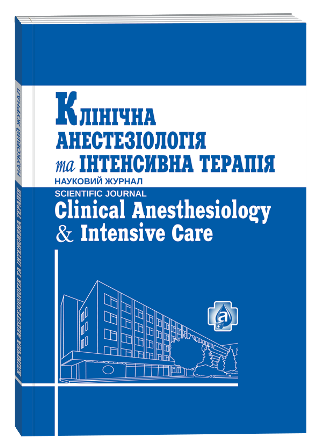TRISS, NTRISS AND ASCOT VALIDATION IN SEVERE TRAUMA POPULATION ADMITTED IN MOLDOVIAN TRAUMA CENTER
DOI:
https://doi.org/10.31379/2411.2616.16.2.2Keywords:
trauma, survival predictive modelAbstract
Introduction: Recent statistical data from different countries places the trauma among the leading causes of death with increasing contribution to the overall mortality rate. The possibility to predict and to anticipate the eventual complications could significantly increase trauma survival rate. This is possible by analyzing different clinical parameters of trauma patients and identifying those with high predictive power. The results were used to concept different traumatic scores. Nowadays, there are a lot of scores elaborated considering anatomical, physiological or mixed criteria. They were developed considering the particularities of distinct medical systems from different countries. They could differ in many aspects from each other, inclusively, from the Moldavian one. Thus, it is necessary to find the optimal score for daily use in distinct conditions for target population of current study. Purpose and task: Validation and comparative evaluation of the most common mixed traumatic scores in conditions of a trauma center from Republic of Moldova. Methods: In the current retrospective analytical research, was analyzed the data of 2651 severe trauma patient’s consecutive admitted in Moldavian trauma center in period between January 2013 – November 2018. The source for information was the electronic database of IMU with no personal information. The inclusion and exclusion criteria were respected. They were calculated ASCOT, TRISS and NTRISS scores to assess patient’s survival rate. The prediction results were compared and statistically analyzed by logistic regression. Results: The comparison of the mixed scores included in the research showed that the NTRISS score showed a maximum coefficient of determination compared to TRISS and ASCOT, all models having calibration indicators that need improvement, the criteria being the significance of the test. Conclusion: In this article, three common mixed predictive models were validated. Of these, NTRISS has optimal characteristics in terms of determination/ discrimination and could be recommended for daily use in conditions of a trauma center from Republic of Moldova.
References
WHO 2014. INJURIES VIOLENCE THE FACTS The magnitude and causes of injuries 20.
Centers for Disease Control and Prevention and Control N C for I P and 2019 Ten Leading Causes of Death and Injury – PDFs|Injury Center|CDC Centers Dis. Control Prev. URL: https://www.cdc.gov/injury/wisqars/LeadingCauses.html (дата звернення: 12.09.2020).
Increasing trauma deaths in the United States. / Rhee P. та ін. Ann. Surg. 2014. Вип. 260. С. 13–21.
Anon PxWeb – Select database
Arnaut O., Grabovschi I., Rojnoveanu G. Traumatic scores validation for intensive care unit population from moldavian trauma center. J. Surg. [Jurnalul Chir.]. 2020. Вип. 16. С. 185–94.
Epidemiological comparison between the Navarra Major Trauma Registry and the German Trauma Registry (TR-DGU®). / Ali Ali B. та ін. Scand. J. Trauma. Resusc. Emerg. Med. 2017. Вип. 25. С. 1–12.
Association for the Advancement of Automotive Medicine 2015 The Abbreviated Injury Scale. 2015 Revision. URL: https://www.aaam.org/abbreviated-injury-scale-ais/ (дата звернення: 12.09.2020).
Trauma scoring systems. / Arnaut O. та ін. Mold. Med. J. 2020. Вип. 63. С. 64–74.







